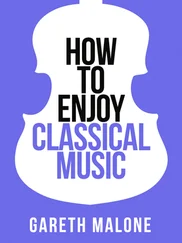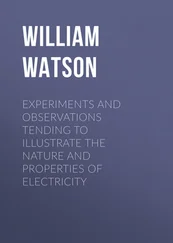Mark Changizi - Harnessed - How Language and Music Mimicked Nature and Transformed Ape to Man
Здесь есть возможность читать онлайн «Mark Changizi - Harnessed - How Language and Music Mimicked Nature and Transformed Ape to Man» весь текст электронной книги совершенно бесплатно (целиком полную версию без сокращений). В некоторых случаях можно слушать аудио, скачать через торрент в формате fb2 и присутствует краткое содержание. Год выпуска: 2011, Издательство: Perseus Books Group, Жанр: Старинная литература, на английском языке. Описание произведения, (предисловие) а так же отзывы посетителей доступны на портале библиотеки ЛибКат.
- Название:Harnessed: How Language and Music Mimicked Nature and Transformed Ape to Man
- Автор:
- Издательство:Perseus Books Group
- Жанр:
- Год:2011
- ISBN:нет данных
- Рейтинг книги:5 / 5. Голосов: 1
-
Избранное:Добавить в избранное
- Отзывы:
-
Ваша оценка:
- 100
- 1
- 2
- 3
- 4
- 5
Harnessed: How Language and Music Mimicked Nature and Transformed Ape to Man: краткое содержание, описание и аннотация
Предлагаем к чтению аннотацию, описание, краткое содержание или предисловие (зависит от того, что написал сам автор книги «Harnessed: How Language and Music Mimicked Nature and Transformed Ape to Man»). Если вы не нашли необходимую информацию о книге — напишите в комментариях, мы постараемся отыскать её.
Harnessed: How Language and Music Mimicked Nature and Transformed Ape to Man — читать онлайн бесплатно полную книгу (весь текст) целиком
Ниже представлен текст книги, разбитый по страницам. Система сохранения места последней прочитанной страницы, позволяет с удобством читать онлайн бесплатно книгу «Harnessed: How Language and Music Mimicked Nature and Transformed Ape to Man», без необходимости каждый раз заново искать на чём Вы остановились. Поставьте закладку, и сможете в любой момент перейти на страницу, на которой закончили чтение.
Интервал:
Закладка:
The Dictionary of Musical Themes is also perfect for our purposes here because it is a dictionary of classical music. “What’s so great about classical music?” you might ask. Nothing, is the answer. Or, at least, there is nothing about the category of classical music that makes it more worthy of study than other categories of music. But it is nevertheless perfect for our purposes, and for an “evolutionary” reason. We are interested in analyzing not just any old tune someone can dream up, but the tunes that actually get selected. We want our data set to have the “melodic animals” that have fared well in the ecology of minds they inhabit. Classical music is great for this because it has existed as a category of music for several centuries. The classical music that survives to be played today is just a tiny fraction of all the compositions written over the centuries, with most composers long dead—and even longer obscure.
Ultimately, the theory developed here will have to be tested on the broad spectrum of music styles found across humankind, but, for the reasons I just mentioned, Western classical music is a natural place to begin. And who is going to be motivated to analyze broad swaths of music for signs of human movement if their curiosity is not at least piqued by the success of the theory on a data set closer to home? As it happens, for many of the analyses carried out in the following chapters, we did also analyze a database of approximately 10,000 Finnish folk songs. The results were always qualitatively the same, and I won’t discuss them much here. At any rate, Finnish folk are universally agreed to be a strange and taciturn people, and they are (if just barely) in the West, so they don’t really broaden the range of our musical data.
With the Barlow and Morgenstern app installed in our toolkit, and with good Finyards slandered without reason, we are ready to embark on a quest for the signature of expressive human movers in music.
In this chapter we will successively take on rhythm, pitch, and loudness. As we will see, when we humans move, we have our own signature rhythm, pitch modulations, and loudness fluctuations. I will introduce these fingerprints of human movement, and provide evidence that music has the same fingerprints. I have at this point accumulated more evidence than can be reasonably included in this chapter, and so I have added an “Encore” chapter at the end of the book that takes up many other converging lines of evidence for human movement hidden inside music.
Drum Core
When most people think about the auditory features peculiar to music, they are likely to focus on melody, and in particular upon the melodic contours, or the pattern of pitch rises and falls. Perhaps this bias toward melody is because the most salient visible feature of written music is that the notes go up and down on the staff. Or maybe it is because our fingers go up and down our instruments, pressing different buttons for different pitches; or because much of the difficulty in playing an instrument is learning to move quickly from pitch to pitch. Whatever the reason, the pitch modulations of the melody get a perceived prominence in music. This is an eternal thorn in the side of percussionists, often charged with not really playing an instrument, and of rappers, dismissed as not really being musicians.
But in reality, the chief feature of music is not the pitch contours of melody at all, but rhythm and beat, which concern the timing, emphasis, and duration of the notes. Whereas nearly all music has a rhythm and a beat, music can get by without melodic pitch modulations. I just came back from a street fair, for example, where I heard a rock band, an acoustic guitarist, and a drum group. All three had a rhythm and beat, but only two of the three had a melody. The drum group had no melody, but its rhythm and beat made it music—the best music at the fair, in fact.
The rhythm-and-beat property is the hard nugget at the core of music. And the diamond at the very center of that nugget is the beat, all by itself. Let’s begin our examination of musical structure, then, with the beat.
We humans make a variety of beatlike sounds, including heartbeats, sexual gyrations, breathing, and certain vocalizations like laughing and sobbing. But one of the most salient beatlike sounds we make is when we walk, and our feet hit the ground over and over again in a regular repeating pattern. Hit-ring, hit-ring, hit-ring , or boom, boom, boom. Such beatlike gaits resounding from a mover are among the most important sound patterns in our lives, because they are the centerpiece of the auditory signature of a human in our vicinity, maybe a potential lover, murderer, or mailman. This is why the beat is so fundamental to music: natural human movement has a beat, and so music must have a beat. That is, from the music-is-movement theory’s point of view, a beat must be as integral to music as footstep sounds are to human movement. And because most actions we carry out have regularly repeating footsteps, most music will have a beat.
And music is not merely expected to have a regularly repeating beat, but to have a human steplike beat. Consider the following three prima facie similarities between musical beat and footsteps. First, note that the rate of musical beats tends to be around one to two beats per second, consistent with human footstep rates. Second, also like human footsteps, the beat need not be metronome-like in its regularity; rather, the beat can have irregularities and still be heard as a beat, because our auditory footstep-recognition mechanisms don’t expect perfectly metronome-like human movers. In fact, musical performers are known to sometimes purposely add irregularities to the beat’s timing, with the idea that it sounds better. And a third initial similarity between footsteps and musical beats is that when people go from moving to not moving, the rate of their footsteps slows down, consistent with the tendency toward a slowing of the beat ( ritardando ) at the end of pieces of music (a topic of study by researchers such as Henkjan Honing, Jacob Feldman, and others over the years). Not all objects stop in this fashion: recall from Chapter 2, on solid-object physical events, that a dropped ball bounces with ever greater frequency as it comes to a stop. If musical beat were trying to mimic simple solid-object sounds instead of human movers, then musical endings would undergo accelerando rather than ritardando . But that’s not how humans slow down, and it’s not how music slows down.
In addition to beats being footsteplike in their rate, regularity, and deceleration, beats are footsteplike in the way they are danced to. Remember those babies shaking their stinky bottoms that we discussed in the previous chapter’s section titled “Motionally Moving”? They dance, indeed, but one might suspect that they aren’t very good at it. After all, these are babies who can barely walk. But baby dancers are better than you may have realized. While they’re missing out on the moves that make me a sensation at office parties, they get a lot right. To illustrate how good babies are at dancing, consider one fundamental thing you do not have to tell them: dance to the beat. Babies gyrate so that their body weight tends to be lower to the ground on, and only on, every beat. They somehow “realize” that to dance means not merely to be time-locked to the music, but to give special footstep status to the beat. Babies don’t, for example, bounce to every other beat, nor do they bounce twice per beat. And dancing to the beat is something we adults do without ever realizing that there are other possibilities. MCs never yell, “Three steps to the beat!” or “Step in between the beat!” or “Step on the sixteenth note just after the beat, and then again on the subsequent thirty-second note!” Instead, MCs shout out what every toddler implicitly knows: “Dance to the beat!” The very fact that we step to the beat, rather than stepping in the many other time-locked ways we could, is itself a fundamental observation about the relationship between movement and music, one that is difficult to notice because of the almost tautological ring to the phrase, “Step to the beat.” Why we tend to step to the beat should now be obvious, given our earlier discussion about the footsteplike meaning of the beat, and (in the previous chapter) about dance music sounding like contagious expressive human behaviors. We step to the beat because our brain thinks we are matching the gait of a human mover in our midst.
Читать дальшеИнтервал:
Закладка:
Похожие книги на «Harnessed: How Language and Music Mimicked Nature and Transformed Ape to Man»
Представляем Вашему вниманию похожие книги на «Harnessed: How Language and Music Mimicked Nature and Transformed Ape to Man» списком для выбора. Мы отобрали схожую по названию и смыслу литературу в надежде предоставить читателям больше вариантов отыскать новые, интересные, ещё непрочитанные произведения.
Обсуждение, отзывы о книге «Harnessed: How Language and Music Mimicked Nature and Transformed Ape to Man» и просто собственные мнения читателей. Оставьте ваши комментарии, напишите, что Вы думаете о произведении, его смысле или главных героях. Укажите что конкретно понравилось, а что нет, и почему Вы так считаете.












